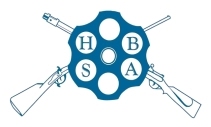In the early 1800s the first self-contained cartridges were made from a brass cap, a cardboard tube and a screw protruding from the side. By 1835 improvements had been made and they eventually became known as “Pinfire” cartridges. In 1845 French inventor Casimir Lefaucheux designed a multi-barrel pistol which allowed cartridges to be loaded from the breech end. The whole multi-barrel section came off by unscrewing it so that the cartridges could be inserted and then it was screwed back on. This was known as a “Pepperbox” pistol. Casimir’s son Eugene Lefaucheux joined his father’s business and in 1854 he designing a revolver in which the cartridges could be loaded from the breech end without needing to remove the barrel. To achieve this the cylinder had to be bored all the way through. His design was patented in Paris and London in April 1854. If anyone tells you that the American called Rollin White patented the first bored though cylinder revolver in 1855 you can tell them that it was only the first in the USA. The French patent was registered a year earlier. If Lefaucheux had also registered his 1854 patent in America the development of the revolver would have taken a completely different path and Smith & Wesson may not have been able to become such a large company. The French revolver was single action only and had a bore size of 12mm. It was known as the Revolver Model 1854. The French Navy were the first to officially adopt the Model 1854 in 1858 but it was not long before most other European countries also adopted it as their military arm. Lots of them were imported into the USA during their civil war (1861 to 1865). The pinfire revolver proved to be very popular with civilians as well as military authorities and lots of different types and sizes were made, mostly in Belgium. You can identify the origin of firearms by their proof marks but an easier way to find out whether the 1854 Lefaucheux single action revolver was made in France or Belgium is to look at the way the barrel is connected to the body. The French way was to screw the barrel to the frame from underneath the cylinder and the Belgian way was to fix the screw in front of the cylinder. There is a lot of information about pinfire revolvers online but a good book to include on your birthday or Christmas present list is “The Pinfire System” by Gene P. Smith and Chris C. Curtis. The next time you are at an Arms Fair have fun by looking out for large pinfire revolvers that may be on display and see if you can tell the difference between French and Belgium made ones. |
